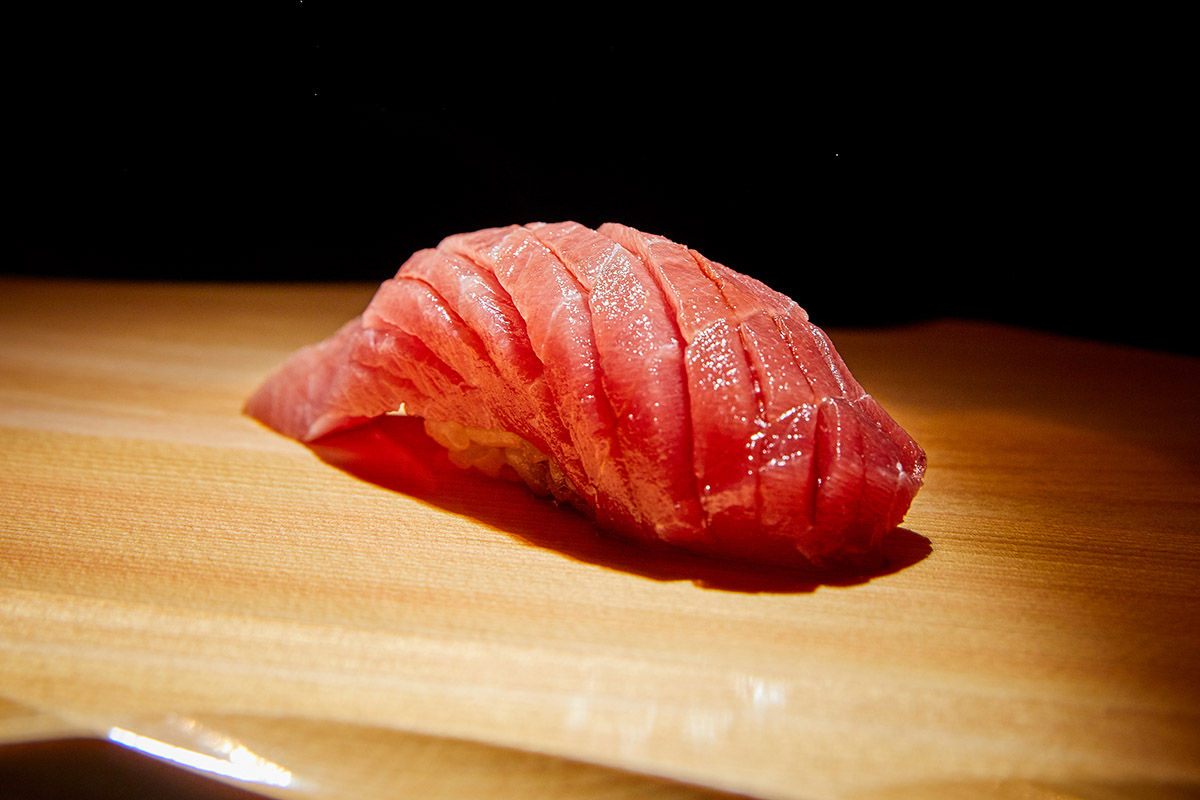Japanese omakase restaurants seem to be popping up everywhere you look these days, but it was still breaking news to find out that a new iteration of Sushi KiShin had “secretly” opened up in The St. Regis Bangkok last month.
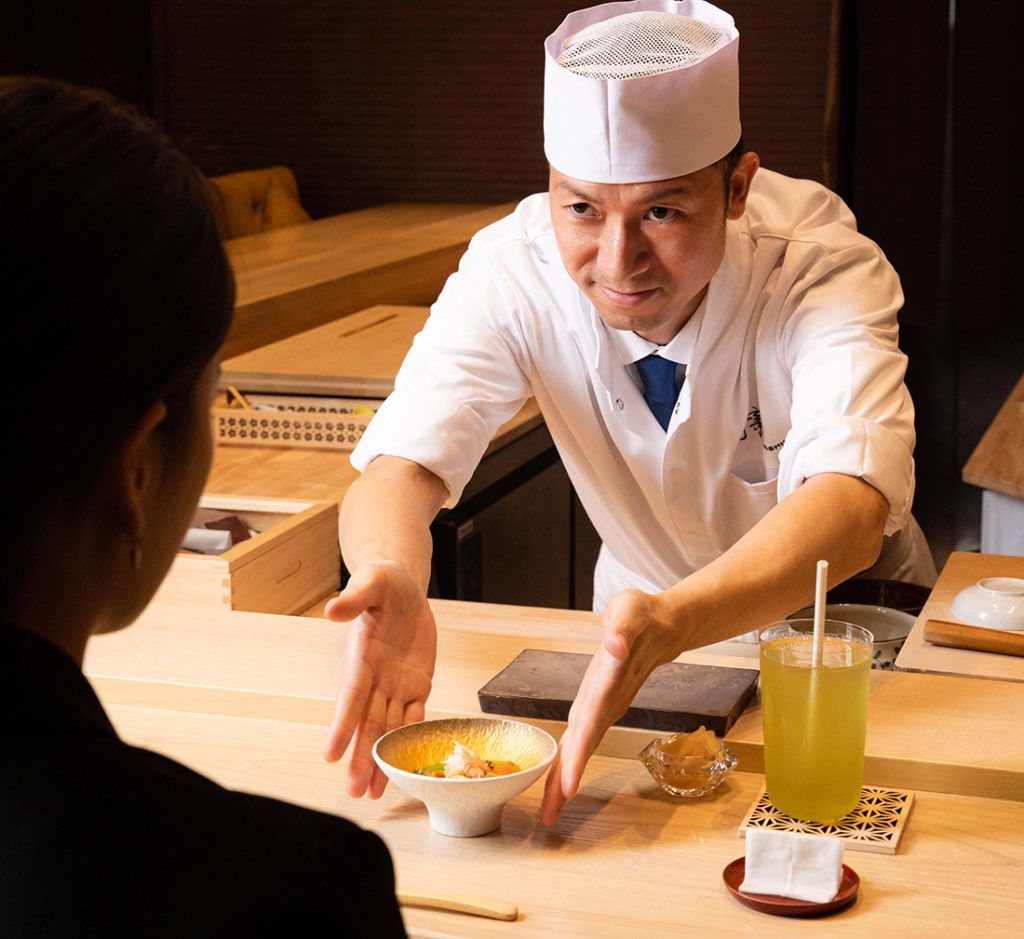
It’s hard not to love the Japanese term omakase, which literally means “I leave it up to you”. In the world of fine dining, it refers to the customer leaving it up to the chef to select and serve the finest seasonal specialties and premium ingredients. Needless to say, that means the choice of chef is fundamental to determining the calibre of any omakase experience. So, when I discovered that Satoshi Tsuru was the maestro chef behind the newly opened Sushi KiShin, tucked away on the 12th floor of The St. Regis Bangkok hotel, I knew I had to make the pilgrimage.
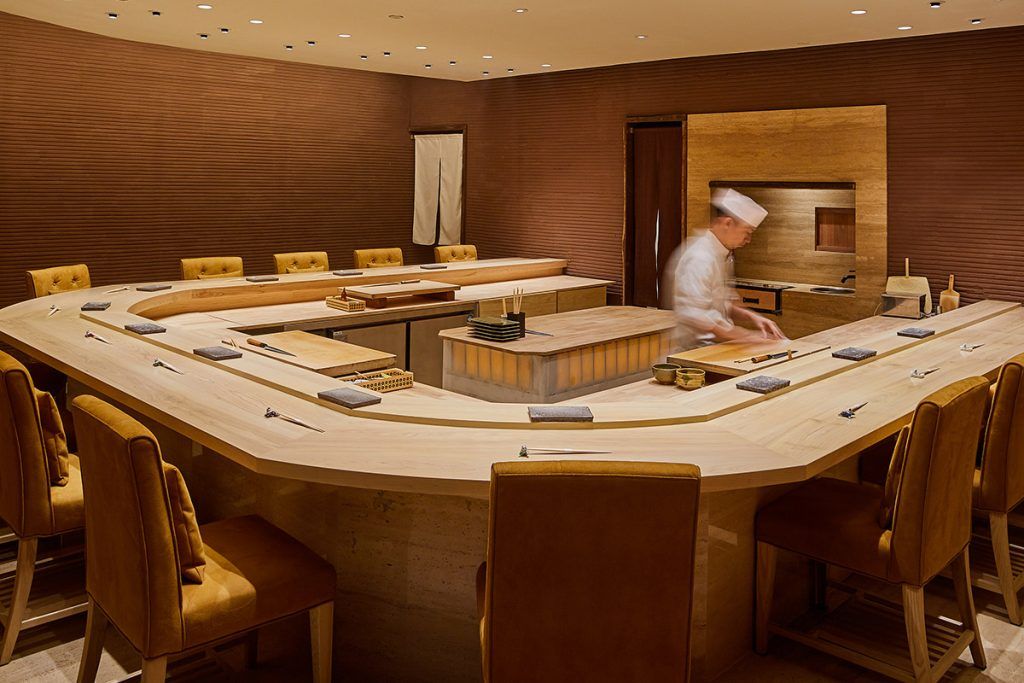
The entrance to the restaurant is discreet, to say the least – immediately to the right of The St Regis Bar, as you exit the elevator – but once you enter it’s another world entirely. First, a narrow, low-lit, curved corridor snakes its way to the dining area itself which, by contrast, is airy and bright; providing great light for taking food photos but remaining soft enough to create a warming ambience.
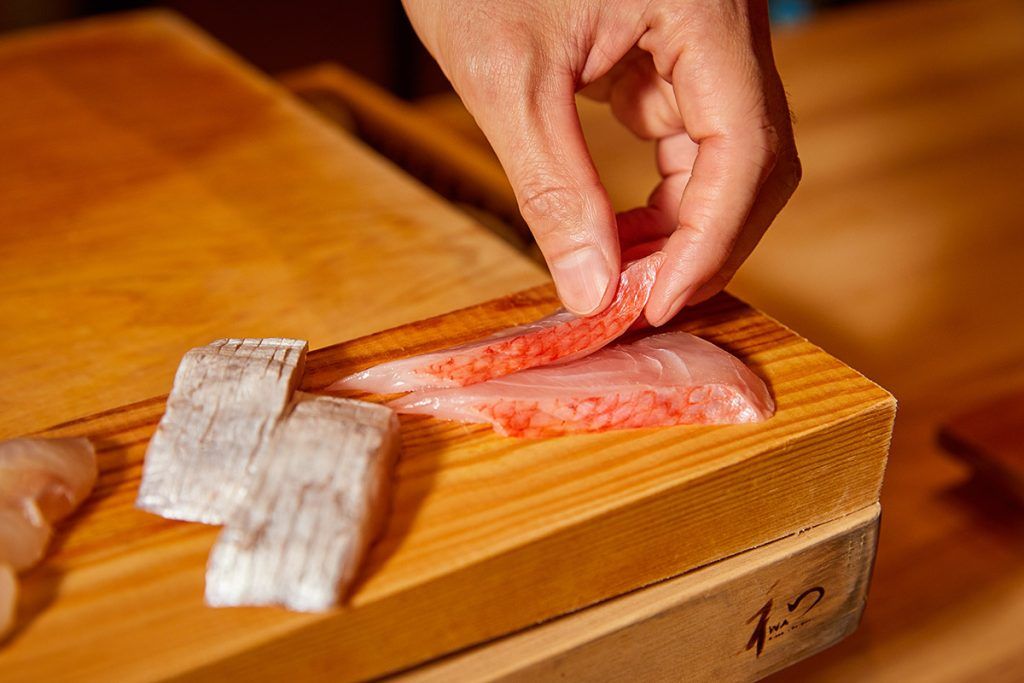
As we enter, Executive Chef Satoshi and his three-man team are busy prepping for the meal ahead… all 16-courses of it. Local omakase enthusiasts will no doubt remember the Tokyo-trained chef from his days at Sushi Zo, as well as the short-lived Sushi Kishin at the Hotel Nikko Bangkok, which opened, unfortunately, just prior to the Covid crisis. This new venture, as the chef explains, is something of a rebirth of that last project.
After settling in to one of the 14 counter-facing seats, I’m handed a drinks menu which lists – to my delight – over a dozen premium sakés, as well as wines, cocktails, and more. We settle on a crisp Hitakami Chokarakuchi Junmai, and soon after our server comes by with a selection of ornate saké cups – no two alike – for us to choose from.
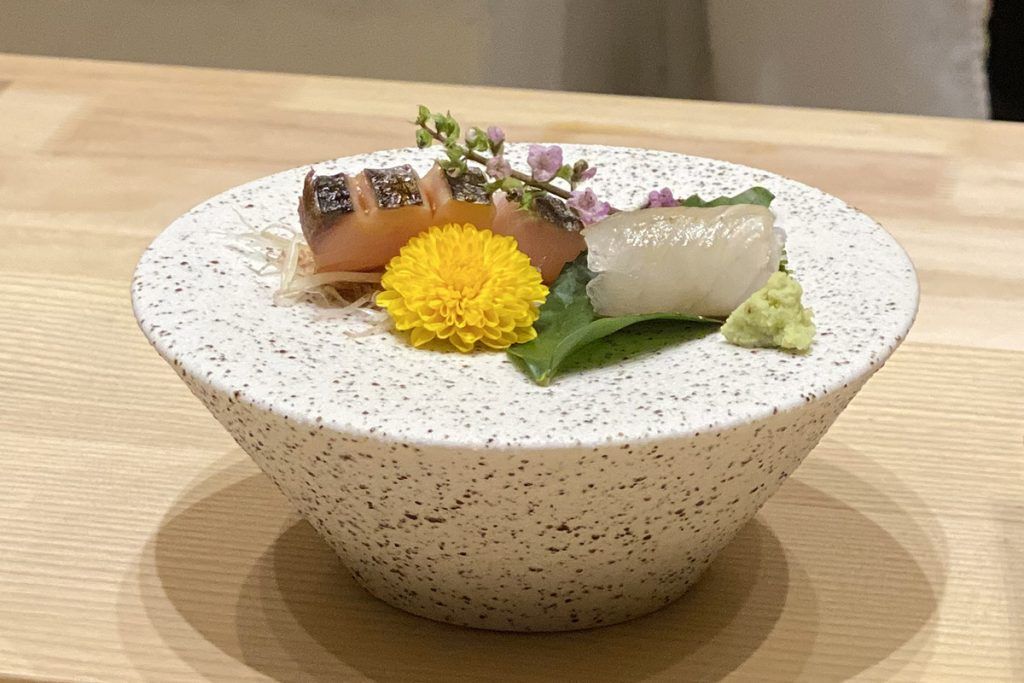
The evening’s meal begins officially when a white speckled earthenware dish is placed before each diner bearing a sashimi morsel of smoked King mackerel paired with a slice of whitefish (halibut) rolled into a tube. Elegantly simple, both bites are butter soft and delicious. The second course arrives soon after, this time served in a black glass bowl that nicely contrasts the pale translusence of the Botan Ebi (shrimp), as well as the bright orange of the underlying uni sauce, while enhancing the three dollops of dark caviar.
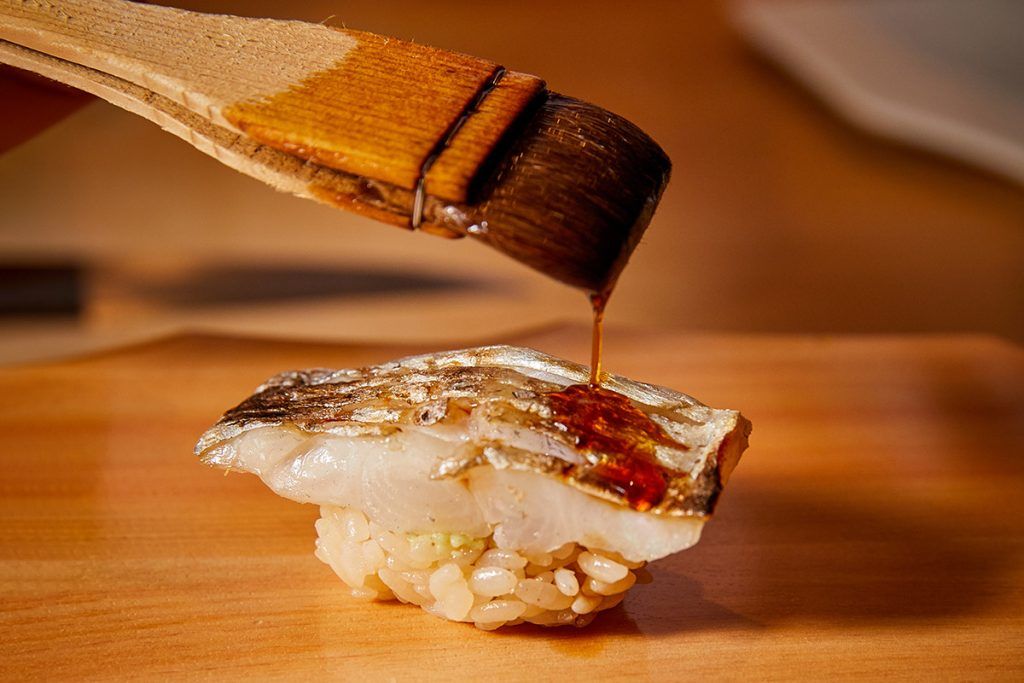
For the next course Chef Satoshi goes into sushi mode, holding in one hand a pliable slice of Houbou, while the other scoops up a portion of rice, to which he administers just the right hint of wasabi. Then, with mesmerising hand movements worthy of conjuring magician, he elaborately kneads the two halves into a whole. As he presents each of us in turn with a singular sushi, our ever-attentive server appears by my side with an iPad, displaying on screen the fish we’re about to enjoy (a bizarre looking beast known in English as a Sea Robin).
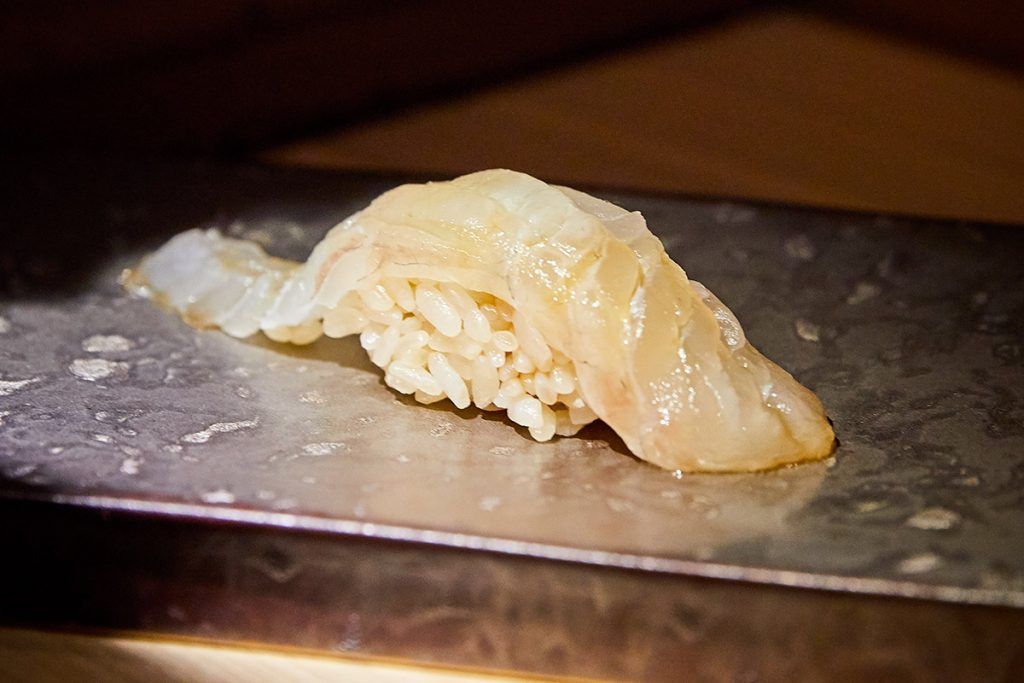
The next superb sushi bite incorporates Shima Aji – or striped jack, according to our now indispensable iPad – which this time comes with a quick brushing of soy sauce glaze and a minute topping of yuzu kosho (Japanese citrus chili paste). Absolutely melt-in-the-mouth tender.
This is followed by the equally delicious Kinmedai – golden eye snapper – which the chef once again meticulously prepares. However, before serving he carefully singes the fish skin on the outer edges using a red-hot piece of charcoal.
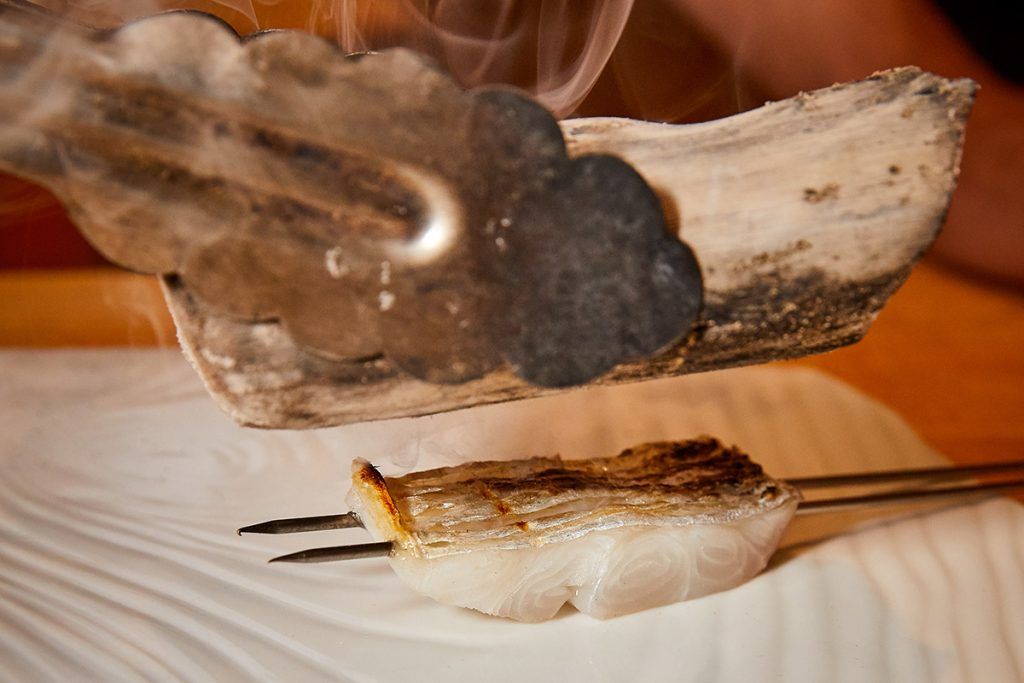
“It’s eucalyptus wood, from Chiang Rai,” explains our server, adding that because it produces no dust it’s perfect to use in this manner. From our seats we can detect faint sizzling sounds as we watch small plumes of smoke arising from the plate the chef holds in one hand, while his other hand deftly manipulates the tongs holding the charcoal log.
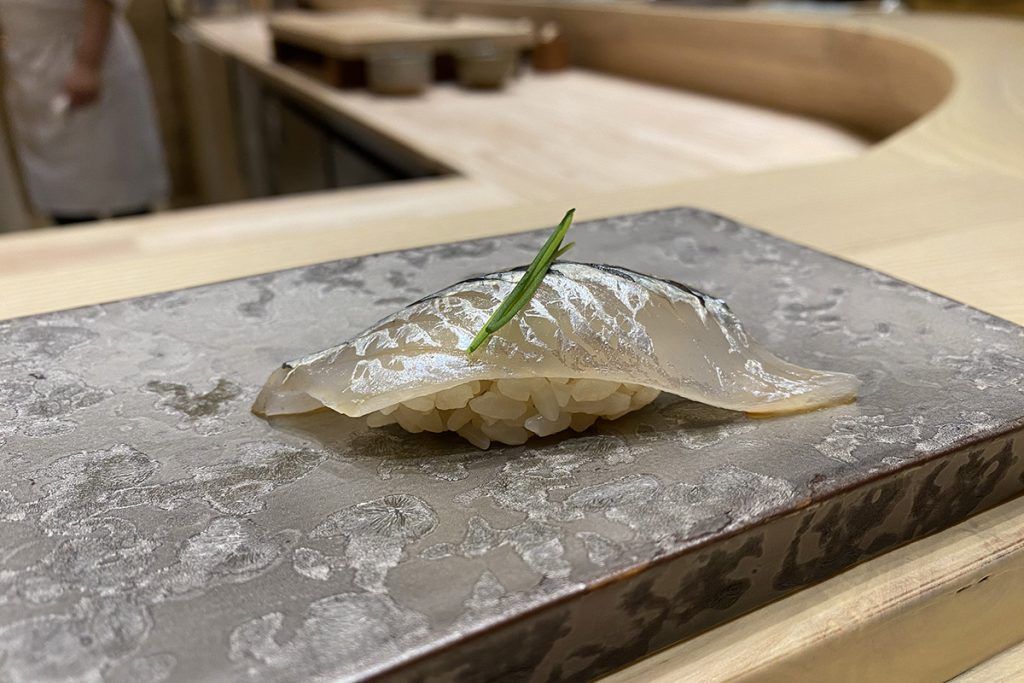
Next up is a succulent morsel of silvery Sayori, or needlefish – topped with Japanese green scallion – which we enjoy while watching the chef begin his preparation of Toro, or tuna belly, which, to our collective surprise, has been aged.
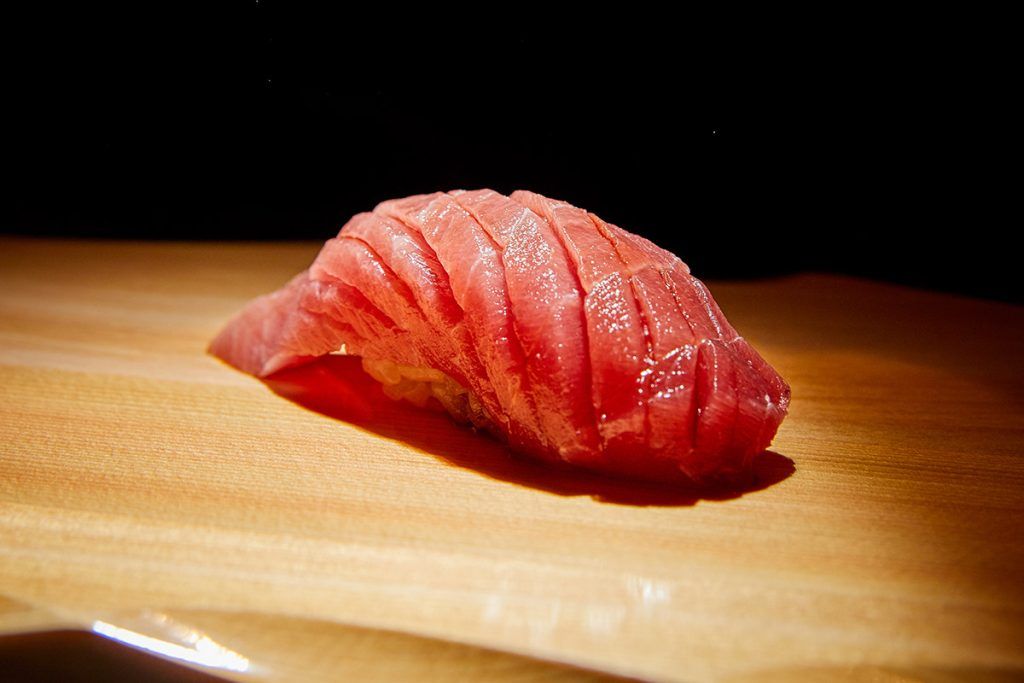
“Aging increases the taste and the umami element,” Chef Satoshi explains, “and it makes it softer. You guys are lucky today because you got the 10-day aged one,” he adds, and sure enough it goes down like finely marbled Wagyu.
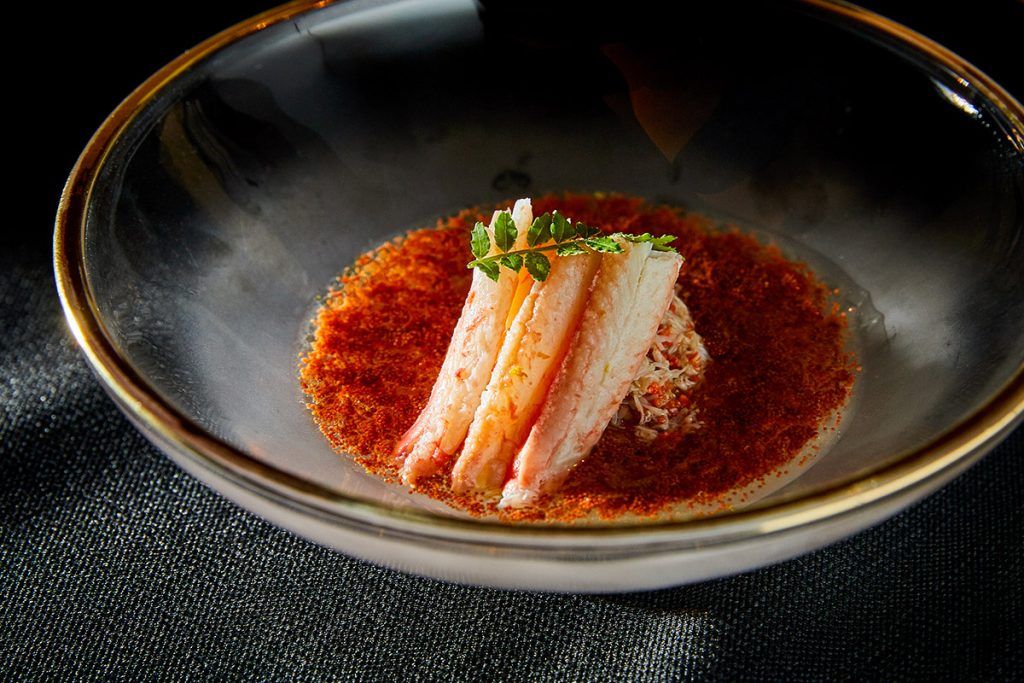
After a sushi portion of Hamaguri – Cherrystone clam – accented with a touch of grated orange zest, the ninth course to arrive consists of two generous slices of octopus, with a dab of bright green wasabi on top. When asked about the preparation, the chef casually reveals the octopus has been marinated with soy sauce, sugar and… Sprite!
“Some people use beer to cook a steak, so it’s that same technique,” he says, explaining that he does it to add sweetness and make it softer. This guy definitely has a lot of tricks up his starched white sleeves.
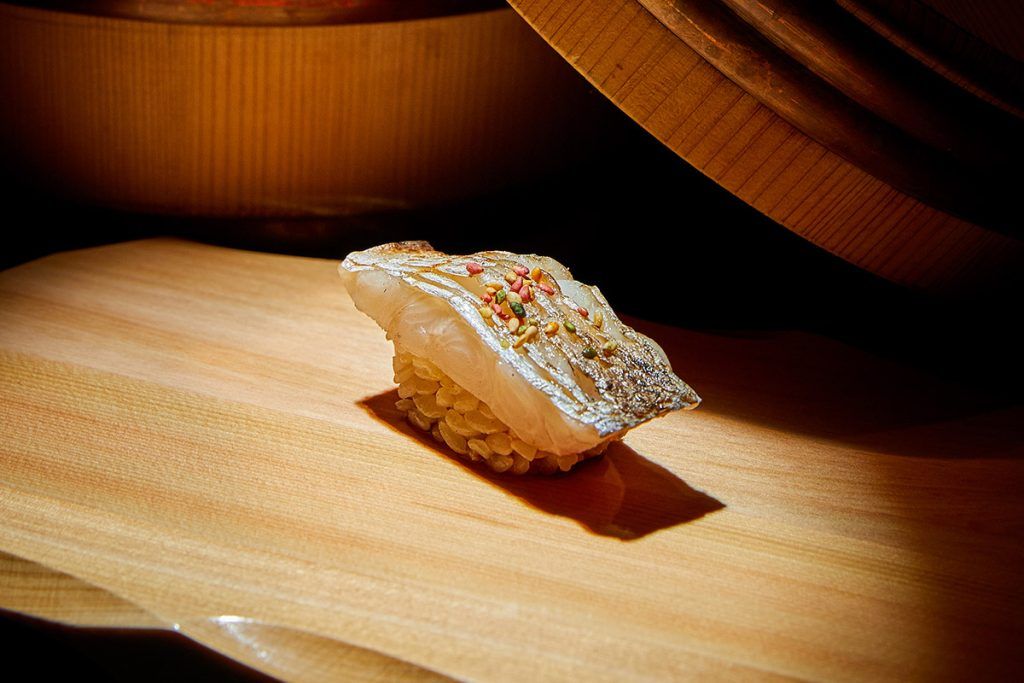
Changing direction somewhat, our next course arrives in white, gold-stemmed goblets, into which has been placed a spoonful of Ankimo – steamed monk fish liver – which we’re told is known as “the foie gras of the sea”. Finished with the chef ’s special recipe sauce, and topped with sesame and wasabi, it’s a richly decadent treat. The chef then returns to a sushi preparation for the Kuromutsu – black throat sea perch – where he once again employs his charcoal singeing technique.
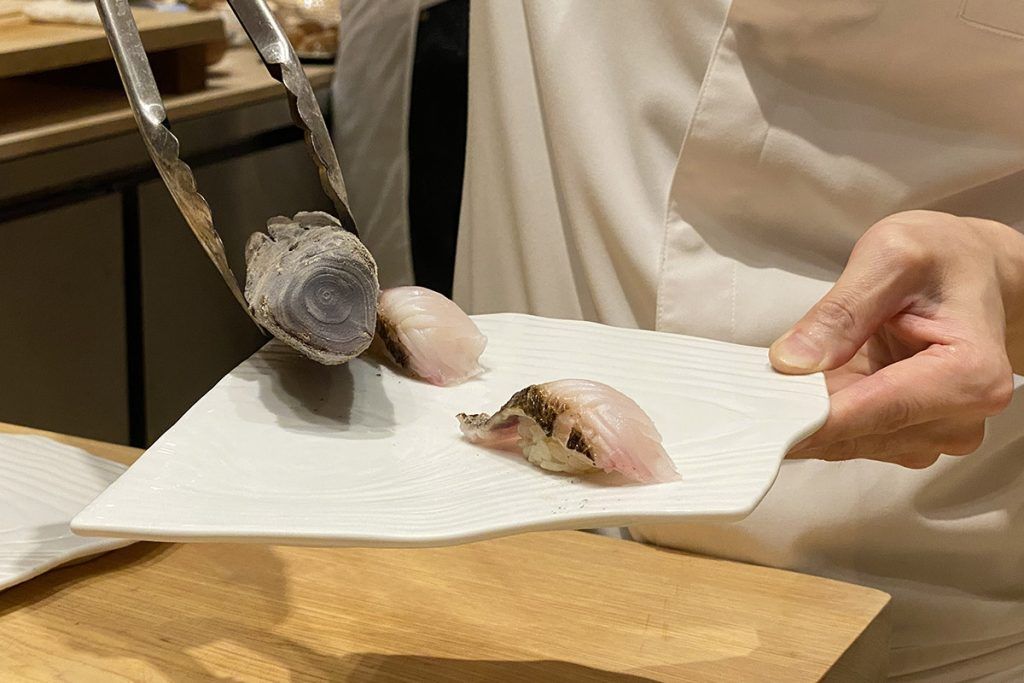
“Many restaurants use a gas torch, but I find it makes a smell, and it’s easy to burn the fish,” he points out while painstakingly browning the pink outer edges of the expertly sliced perch. “And when I bring the charcoal close – almost touching – the oil from within the fish rises to the surface and bubbles, giving more of an umami taste.”
There’s a fair amount of fat in the meat of this fish, which is in keeping with the standard omakase practice of sequencing the dishes to move from leaner to heavier. That trend continues with the Bafun Uni – a species of short-spiked sea urchin from Hokkaido – which is here served slightly cold (fresh from fridge), atop a nori-wrapped cylinder of rice. Delish!
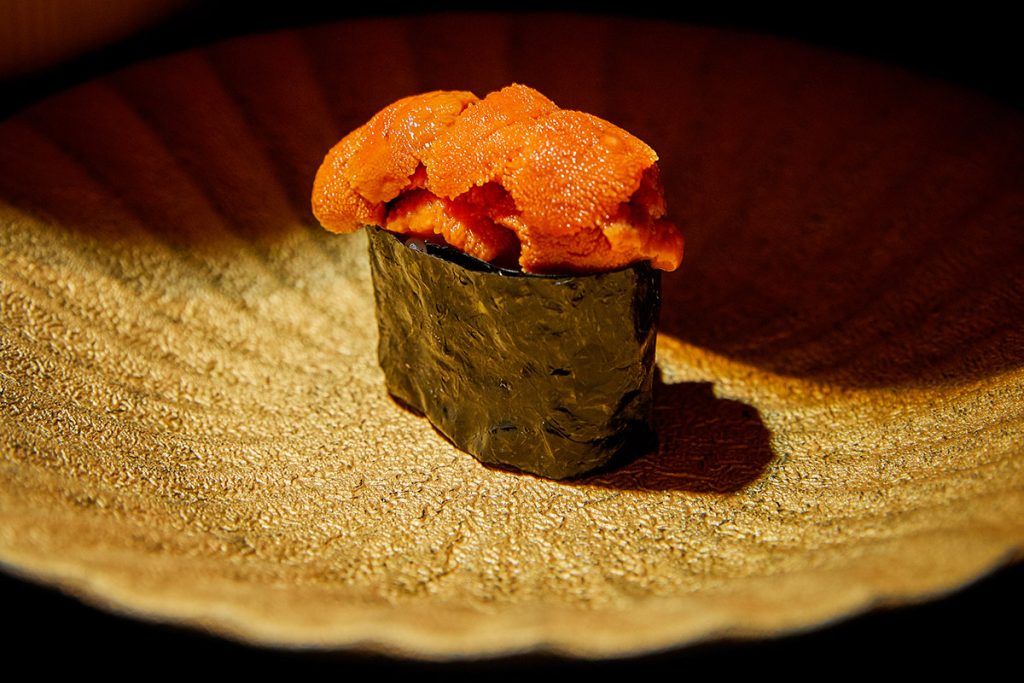
Things wind down with a tasty bowl of Amadei – white seabass – served in a dashi broth, which is soon followed by tantalising slices of marinated and grilled A5 Wagyu beef (the only land creature course), accompanied by a glass bowl holding an unbroken egg yolk, into which the meat can be luxuriantly dipped. To be honest though, it hardly needs it.
The final savoury portion begins with Hoten-Niku – a fatty, under-the -cheek cut of tuna – paired with rice, pickled radish, and a touch of wasabi, all enclosed in a folded nori wrapper. Offered directly from the chef ’s hands to yours, it’s meant to be eaten in a single bite. “Err… maybe two,” the chef says with a grin.
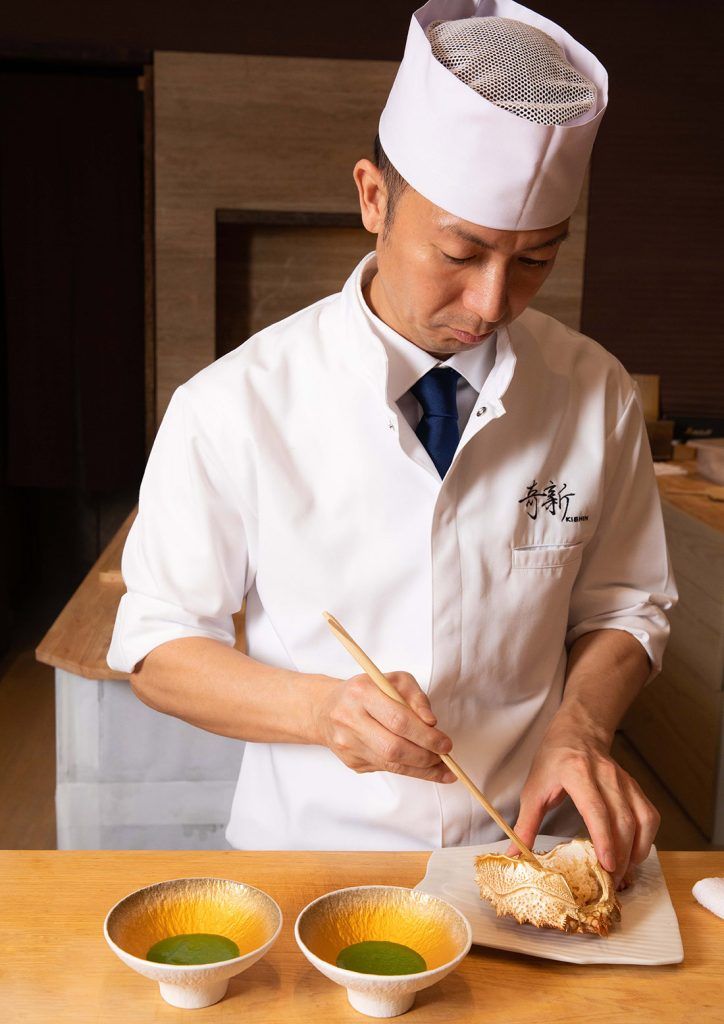
A cup of dashi soup with abalone concludes the main meal, and as we wait for the dessert to be prepared, we’re told about some of the restaurant’s cool eco-conscious design features, including the fact that our comfy, high-back seats are upholstered in soft supple faux leather made from pineapple plant fibres (the same material Lexus uses, apparently). As for the restaurant’s name, the chef explains that “Ki” refers to a miracle, or something wonderful, while “Shin” denotes something new.
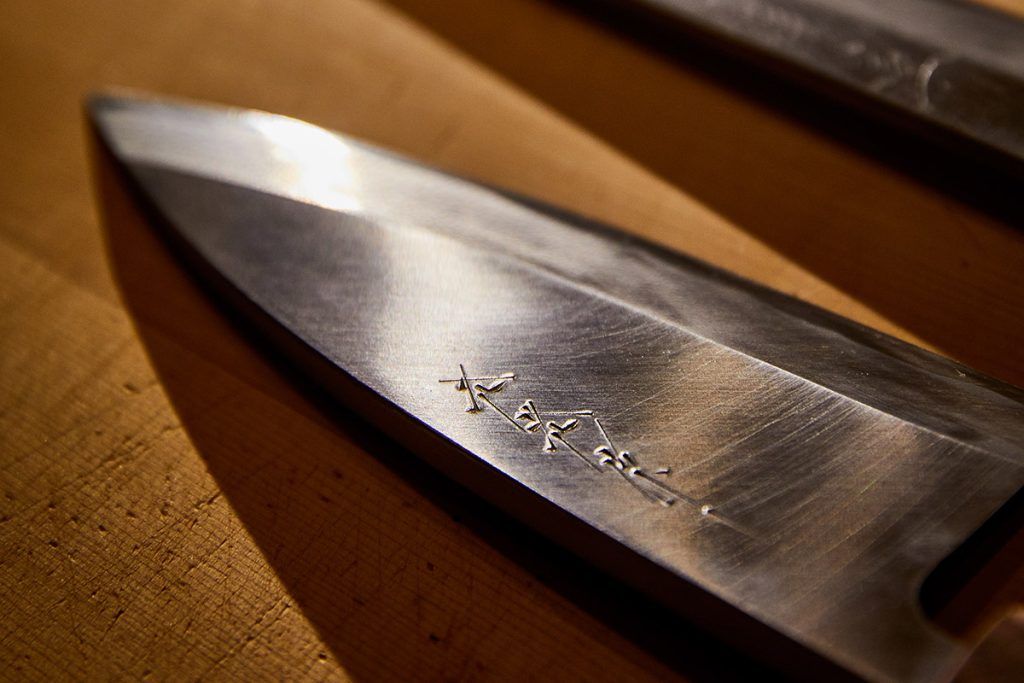
And while calling any restaurant a “miracle” is a bit overzealous, I would say for sure that Sushi KiShin is a “wonderful new” addition to Bangkok’s ever expanding omakase scene. It’s minimalist yet adventurous, elegant yet playful, and provides diners with the opportunity to observe up-close the surgically precise knifework of Chef Satoshi and his team… something which is, to a kitchen klutz like me, totally miraculous.
For more information or to make reservations, contact Sushi KiShin restaurant.
an update!
You’re all set
Thank you for your subscription.
Subscribe to our newsletter to get the latest updates.
You’re all set
Thank you for your subscription.

